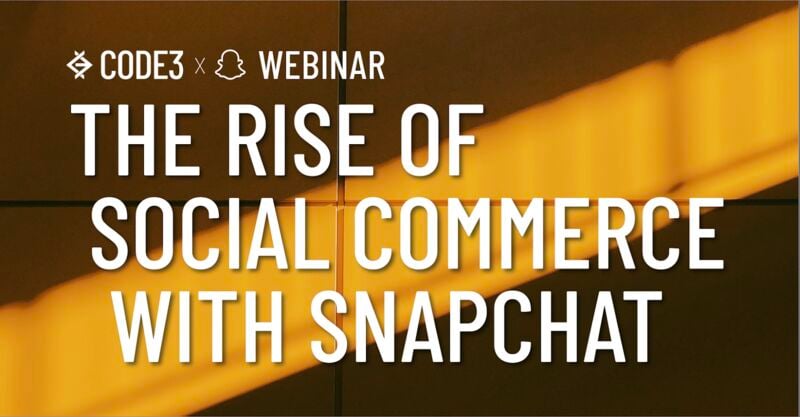RESOURCES
The Amazon Impact: How Consumer Brands Must Reinvent Strategy to Win
According to the US Commerce Department, total US ecommerce sales hit $453.5B in 2017, up 16% from 2016. It’s estimated that Amazon share of total US ecommerce sales was 44%. What is even more astounding, is that of the YoY ecommerce sales increase in the US, Amazon made up 70% of the growth, according to Internet Retailer.

Bezos & Co. have built an empire to strategically attack various industries by changing the ways consumer’s research and purchase products. Consumer electronics, beauty, home goods, and grocery are primed to be some of the largest categories disrupted by Amazon over the next 10 years. For example, according to the Food Marketing Institute, online grocery sales are projected to reach 20% of the total US grocery market - that’s $128 billion, if you’re counting!
With Amazon booming and no signs of slowing down, consumer brands are faced with both opportunities and challenges. Between consumer buying behavior changing and Amazon set to become the industry leader, the brands that move quickly to identify opportunities and invest in new strategies on Amazon will emerge as the clear leaders. Those brands that decide not to adapt their strategy to fit consumer behaviors, well, they may well become the next Blockbuster.
Aligning with Consumer Demand
For the first time, Amazon has created a way for consumer brands to reach consumers in a way that impacts the entire value chain. Perhaps one of the largest opportunities for brands is that they are now faced with an infinite shelf space in a retail outlet. Gone are the days of a finite space to place products in front of a customer. Whether that be the weekly ad from a retail partner or the physical shelf itself, Amazon has created an eco-system where true consumer demand can be met, regardless of the volume.
Brands now can analyze consumer demand and create product offerings that meet these demands in a scalable and profitable way. For example, XYZ Product Company is no longer limited to the small number of items purchased by retail buyers, which typically are products that provide the largest appeal to the mass consumer. In the era of Amazon, XYZ Products may decide to offer unfamiliar styles, variety packs, and alternate pack sizes to capture a larger portion of consumer demand. XYZ Products may also roll out an aggressive “short-run” program to test product line extensions and variations, which could lead to the acquisition of new customers and provide growth opportunities.
Brands can now start to fuel R&D groups using Amazon as a main testing ground. A virtual sandbox that consumer brands can test new products and truly react to emerging consumer demands.
Strategy Wins…Not Legacy Tactics
Every day at Marketplace Strategy we encounter at least one of two types of brands as it relates to Amazon.
First is the major, well-known brand frustrated because they are being beat out by smaller brands, or that aren’t capturing market share on Amazon at the same pace as offline retailers. They are frustrated because they’ve been trained that they are the best, have the best distribution, and have the best relationships to get their brand in front of more consumers at the exact point-of-purchase vs. any smaller brand. The barrier to entry in the offline retail space offers significant advantages for major brands.

Second is the challenger brand. This brand wants to take on the major companies because they believe their products can offer something to the end customer that is unique (price point, value prop, outcome, etc.). They want to strategically pick away market share and acquire brand advocates for the long term.
The greatest part of all, both brands possess the ability to accomplish their goals, relieve their frustration, and win market share. But to the major, well-known brand, it will be about realizing that the playing field is leveled, consumers will drive demand, and legacy barriers won’t keep out competitors. Today more than ever, consumer brands must develop and invest in an Amazon-specific strategy to win.
As Jeff Bezos said on ABC News: “What we need to do is always lean into the future; when the world changes around you and when it changes against you - what used to be a tail wind is now a head wind - you have to lean into that and figure out what to do because complaining isn't a strategy.”
Brands today have a wonderful opportunity to leap the standard “S” curve and create a sustainable strategy for their businesses. But without purposeful focus and a strategy specific to Amazon, brands are also setup to lose massive market share and open the door to lesser-known, smaller competitors.
For example, a consumer electronic brand may find it useful to adopt a hybrid-account structure (working with Amazon both through Vendor and Seller Central), to enable complex product advertising and sales strategies, or they may invest in AAP and AMS to leverage both awareness (demand generation) and acquisition (demand capture), or they may optimize their product pages for Amazon’s search algorithm.
Of course, in some cases, major brands still have some advantages. However, these advantages are becoming less impactful as Amazon and other marketplaces become a place where consumers drive decisions. And if these brands do not include Amazon in their strategic planning, it will jeopardize capturing the single largest opportunity for growth.
Reinventing Sales & Marketing
Ask yourself this question…is Amazon managed by marketing or sales?
Working with many large brands, we have found Amazon to be one of the largest opportunities to bring both marketing and sales together. On one side, you have the marketing group, traditionally tasked with generating brand awareness, analyzing first- and third-party data, and generating the other traditional marketing functions, such as product packaging, creative, and digital. On the other side, you have sales. Sales teams are typically focused on relationships with retail customers. Then, enter Amazon…
Brands that are winning on Amazon are showing great collaboration between sales and marketing. In fact, we’ve seen tremendous opportunity for growth when sales -- the group that we’ve seen typically manage the Amazon relationship -- brings in marketing. For marketers, the move from branding and awareness to a multi-funnel approach, leveraging both creative strategies with data-driven acquisition marketing, can be a powerful approach to growth.
The reality is that Amazon is a retailer, a media platform, content publisher, and distributor, rolled into one. Brands that bring in expertise across these areas in support of their brands can execute powerful, holistic strategies that can directly lead to massive sales growth.
Amazon is creating an eco-system never seen before with no indication of slowing down. For consumer brands, it’s time to take the new way of reaching customers seriously by adopting Amazon-specific ways to build awareness, influence purchase behaviors, and create relationships directly with end customers. There are billions on the line.

Drew Kraemer
CEO
Image Source: Supermarket Guru
[/fusion_text][/fusion_builder_column][/fusion_builder_row][/fusion_builder_container]
SIGN UP FOR OUR WEEKLY NEWSLETTER

News, Views, and Valuable Resources
Delivered to Your Inbox Each Week




